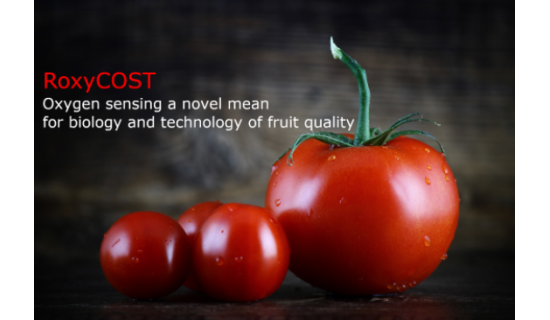Progetto RoxyCOST
Oxygen sensing a novel mean for biology and technology of fruit quality
It is widely accepted that consumption of fruit and vegetable is beneficial to human health due to their content of essential nutrients such as vitamins and antioxidants. Any strategy aimed at increasing fruit consumption must necessarily improve the organoleptic qualities of these commodities since fruit quality is judged by the consumer not at the time of harvest but after a post-harvest period that can be long due to the complexity of the distribution channels. Fruits continue to evolve during their post-harvest shelf life which results in substantial deterioration. Postharvest losses are 30% of total fruit and vegetables production in Europe. Therefore, the control of the ripening process is instrumental to maintaining high nutritional and sensory values and to reducing post-harvest losses. Post-harvest management of fruits relies on controlled or modified atmosphere and on packaging. The recent discovery that factors involved in sensing low oxygen and oxidative stress are involved in ripening opens new research avenues for controlling fruit quality via innovative breeding strategies and new dedicated technologies. By bringing together researchers from different disciplines, the action is anticipated to bring major breakthroughs in the understanding of fruit physiology, thus providing new targets to control fruit quality and post-harvest shelf life. The research will implement advanced methodologies and concepts and will significantly enhance European competitiveness through promoting training of early stage researchers in cutting-edge technologies. By combining studies on different models this Action will lead to advances that will translate into novel practices and technologies to improve fruit sensory and nutritional qualities.

